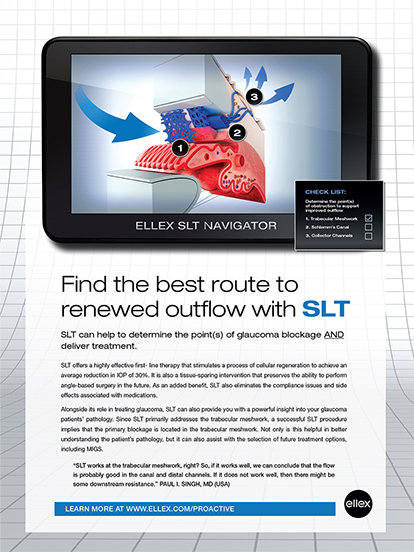Although glaucoma and ocular surface disease are hot topics in eye care, astigmatism is the hottest of them all.
Why, you ask? For starters, there are few better opportunities to improve a patient’s quality of life and vision than by treating astigmatism at the time of cataract surgery. Look at the numbers: In 2016, approximately 4 million cataract surgeries were performed; by 2017, that number increased by 2.5%.1 Among those surgeries, 52% of patients were within the treatable range of a toric IOL, but only 7% of patients received one.2 This is an unfortunately large number of missed opportunities to provide patients with the best care, provided there are no contraindications to toric IOLs.
Now is the time to change those statistics. In this article, we share some pearls that we use at Virginia Eye Consultants to maximize our outcomes.
PATIENT ENGAGEMENT
Patient engagement is the key to highly successful cataract outcomes. It is important to start having educational conversations in the early stages of cataract formation.
When a clinician sees the earliest signs of cataracts, he or she should consider it an opportunity to educate the patient about the condition. Educate the patient on the reasons the cataract has formed, and inform him or her that your office will continue to monitor the cataract over time. This is something that our office highly encourages our referring doctors to do as well.
When it is almost time for surgery, we advise framing it as good news. We tell patients that recent technological advances will give them a variety of options at the time of surgery. Had they needed cataract surgery a decade or ago (or longer), we say, their IOL options would have been much more limited.
We provide educational materials such as websites and brochures to encourage patients to learn more about cataracts and the options that will be available when their cataracts are ready for surgical removal. We recommend expanding on this discussion and dialogue annually until the patient is ready for surgery.
TALK ABOUT ASTIGMATISM
Patients with astigmatism should already have a fairly good grasp of the condition. They know it has been corrected throughout their lives with glasses, contact lenses, or refractive surgery. They may have heard about the shape of the eye and the different focal points that need to be corrected. Remind the patient that uncorrected astigmatism can lead to blurred vision, double vision, or asthenopia, and then inform them that the condition can be addressed during cataract surgery. When patients are educating themselves on cataract surgery options, we let them know about limbal relaxing incisions (LRIs) and toric IOLs that we may be able to use to maximize their uncorrected distance vision.
TIME FOR SURGERY
When it is time for cataract surgery, remind the patient of the discussions you have previously had about cataracts and astigmatism. At Virginia Eye Consultants, when we measure keratometry (K) values before surgery, any patient with > 0.50 D of corneal astigmatism is considered a candidate for either LRIs (between 0.50 D and 1.00 D K cyl) or a toric IOL (> 0.75 D K cyl).
The benefits of toric IOLs over LRIs include improved predictability and better quality of vision, as IOLs correct astigmatism at the nodal point of the eye.
MAKE A STRONG RECOMMENDATION
Patients look to their doctors for guidance, and many will have questions, such as which treatment you would personally choose, what specifically occurs during surgery, and whether they will still require spectacles postoperatively. Within our practice and referral network, most of these questions are answered several years before cataract surgery is needed, and patients become knowledgeable about their condition in advance. A small investment in education can go a long way in managing patients with astigmatism.
- Market Scope. Cataract: Q1-2017 cataract quarterly update.
- AcrySof IQ Toric [product information]. Fort Worth, TX: Alcon; 2009.







